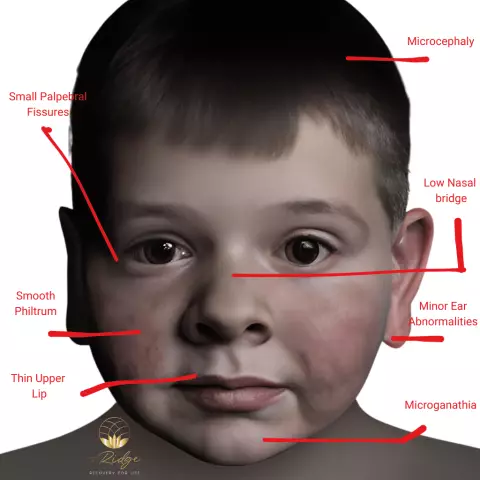- Author Rachel Wainwright [email protected].
- Public 2023-12-15 07:39.
- Last modified 2025-11-02 20:14.
Lyell's syndrome

Diseases of an allergic nature have a different effect on the body in their consequences. Lyell's syndrome has the most severe outcome. This disease is life threatening, it is characterized by necrotic changes in the epidermis - the upper layer of the skin and, subsequently, its detachment. The death of tissues is due to the toxic effect of allergens that enter the body, as a result of which characteristic symptoms of the disease appear.
Lyell's syndrome, symptoms
The body's reaction to a foreign substance in Lyell's syndrome develops quite quickly, within a few days. There is a sharp rise in temperature to high numbers, then rashes appear that cover the entire body. After just a few days, blisters form on the skin, resembling the clinical picture after an extensive burn. The epidermis is exfoliated in places, numerous hemorrhages appear on the trunk.
In addition to the skin, with Lyell's syndrome, mucous membranes are also damaged. Moreover, not only the outer ones - lips, conjunctiva of the eyes, genitals, but also the membranes of the internal organs. Rashes on the mucous membranes lead to the development of inflammatory processes in the lesions.
The phenomena of intoxication in Lyell's syndrome are growing rapidly. Against the background of a high temperature, dehydration quickly sets in, which is characterized by weakness, drowsiness, and disorientation. The blood thickens, which leads to difficulty in its movement through the vessels and disruption of the functioning of internal organs, primarily the heart, kidneys, liver.
Lyell's syndrome, causes
Medicines play an important role in the development of any allergic disease, including Lyell's syndrome. It is believed that the specific reaction of the body is caused, first of all, by antibacterial agents. However, allergies can be triggered by any of the medications. It occurs, as a rule, with a person's increased sensitivity to substances that affect him.
Lyell's syndrome, or epidermal necrolysis, differs from other diseases of allergic origin. Most of them are characterized by the reaction of the body directly to the substance introduced into it. In this syndrome, the allergen is combined with proteins in the cells of the epidermis, which makes the upper layer of the skin "alien" for the body and leads to its rejection. It is with this that the strongest human immune response is associated even to a seemingly completely harmless drug.
As a result of the disease, a rapid breakdown of proteins occurs, the products of which accumulate in the body and have a toxic effect on it. Lyell's syndrome has a high mortality rate, which is due to the speed and severity of the damage to the body.
Lyell's syndrome in newborns
Newborn babies face many pathogenic environmental factors. This can provoke the development of various diseases in them. However, the immunity received from the mother protects the babies, so such a serious allergic disease, which is Lyell's syndrome, is very rare in newborns.
It should be noted that epidermal necrolysis in adults develops after taking medications, sometimes after transfusion of blood and its component - plasma. For young children, the development of Lyell's syndrome against the background of staphylococcal infection is more characteristic. In this case, the presence of hereditary allergic readiness plays an important role in the onset of the disease.
Due to the early age of children, epidermal necrolysis has a very severe course and is characterized by an acute onset. With Lyell's syndrome in newborns, symptoms of intoxication rapidly increase. The involvement of almost the entire surface of the skin can contribute to the development of sepsis. However, the percentage of recovery in young children, with timely treatment started, is significantly higher than in adults.
Lyell's syndrome, treatment
The appearance of the first signs of Lyell's syndrome requires immediate hospitalization of the patient. With this disease, the timely provision of medical care plays an extremely important role in saving the patient's life. Therapeutic measures are aimed primarily at combating intoxication. In addition, it is necessary to normalize the water-salt balance, blood supply and the functioning of vital internal organs.

With Lyell's syndrome, treatment necessarily includes a local effect on the affected skin. For this purpose, special medicines are used in the form of aerosols, which promote the healing of skin defects. For the oral mucosa, rinsing or irrigation with decoctions of medicinal herbs is also used. Caring for patients with Lyell's syndrome is very important. It is carried out according to the principle of management of burn patients. They require only sterile dressings and underwear; a certain temperature must be maintained in the ward equipped with germicidal lamps.
In a very severe course of Lyell's syndrome, the use of plasmapheresis helps to treat the disease. This procedure has two directions of action on the body. The first is the elimination of toxic substances from it, and the second is the normalization of the activity of the immune system, which, together, contributes to recovery.
The unpredictability of the body's response to the effects of any substances makes it difficult to prevent allergic diseases. However, given the severity of the consequences of many of them, for example, such as Lyell's syndrome, you need to take responsibility for your health. If an allergic reaction occurs, you should not self-medicate, as this can lead to the most negative consequences.
The information is generalized and provided for informational purposes only. At the first sign of illness, see your doctor. Self-medication is hazardous to health!






